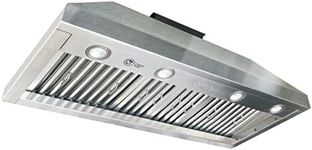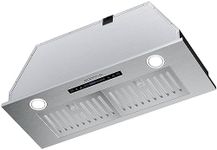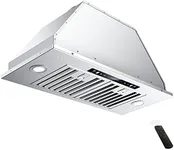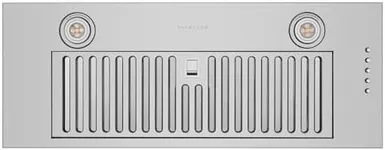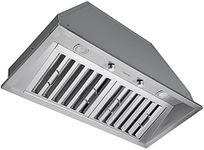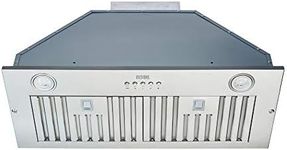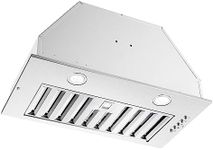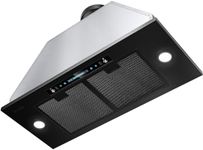Buying Guide for the Best Insert Range Hoods
Choosing the right insert range hood is important for keeping your kitchen air clean and free from smoke, grease, and odors. Insert range hoods are designed to fit inside custom cabinetry or a hood enclosure, making them a popular choice for those who want a seamless, built-in look. When shopping for an insert range hood, it's important to consider how it will fit into your kitchen setup, how powerful it needs to be, and what features will make your cooking experience more comfortable and efficient.Size (Width)The size of an insert range hood refers to its width, which should match or slightly exceed the width of your cooktop or range. This is important because a hood that's too small won't effectively capture smoke and steam, while one that's too large may not fit your cabinetry. Common sizes are 24, 30, 36, and 48 inches. To choose the right size, measure your cooktop and the space inside your cabinet or enclosure. For best performance, select a hood that's at least as wide as your cooking surface, or ideally a few inches wider on each side if space allows.
Airflow (CFM)CFM stands for cubic feet per minute and measures how much air the hood can move. This is crucial for removing smoke, steam, and odors from your kitchen. Lower CFM (around 200-400) is suitable for light cooking or electric ranges, while higher CFM (400-900+) is better for frequent, high-heat, or gas cooking. To pick the right CFM, consider how often and what type of cooking you do. If you cook often with high heat or fry foods, a higher CFM is recommended. For occasional or light cooking, a lower CFM may be sufficient.
Ducted vs. DuctlessInsert range hoods can be ducted (venting air outside) or ductless (recirculating air through filters). Ducted hoods are more effective at removing heat and odors, but require installation of ductwork. Ductless hoods are easier to install and can be used where ducting isn't possible, but they rely on filters and may not be as effective. Choose ducted if you want maximum performance and have the option to vent outside. Choose ductless if you need flexibility or can't install ducts.
Noise LevelNoise level is measured in sones or decibels and indicates how loud the hood will be when running. This matters if you want a quieter kitchen environment. Lower values mean quieter operation. Some hoods have multiple speed settings, so noise can vary. If you are sensitive to noise or have an open kitchen, look for models with lower noise ratings, especially at the speeds you plan to use most often.
LightingMost insert range hoods come with built-in lights to illuminate your cooking area. The type (LED, halogen, incandescent) and brightness can vary. Good lighting helps you see what you're cooking and adds to kitchen safety. If you cook often at night or in a dim kitchen, look for hoods with bright, energy-efficient lighting and adjustable settings.
Filter TypeFilters trap grease and, in ductless models, also help remove odors. Common types are aluminum mesh, stainless steel baffles, and charcoal filters. Baffle filters are durable and easy to clean, while mesh filters are lightweight but may need more frequent cleaning. Charcoal filters are used in ductless hoods to absorb odors. Choose a filter type based on how easy it is to clean and replace, and whether you need odor control (for ductless setups).
Control TypeControls can be push buttons, touch panels, or even remote controls. This affects how easy it is to operate the hood. Simple controls are straightforward, while touch panels may offer more features like timers or speed adjustments. Pick a control type that feels comfortable and convenient for you, especially if you want extra features or prefer a certain style.
